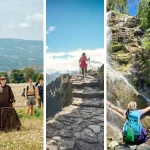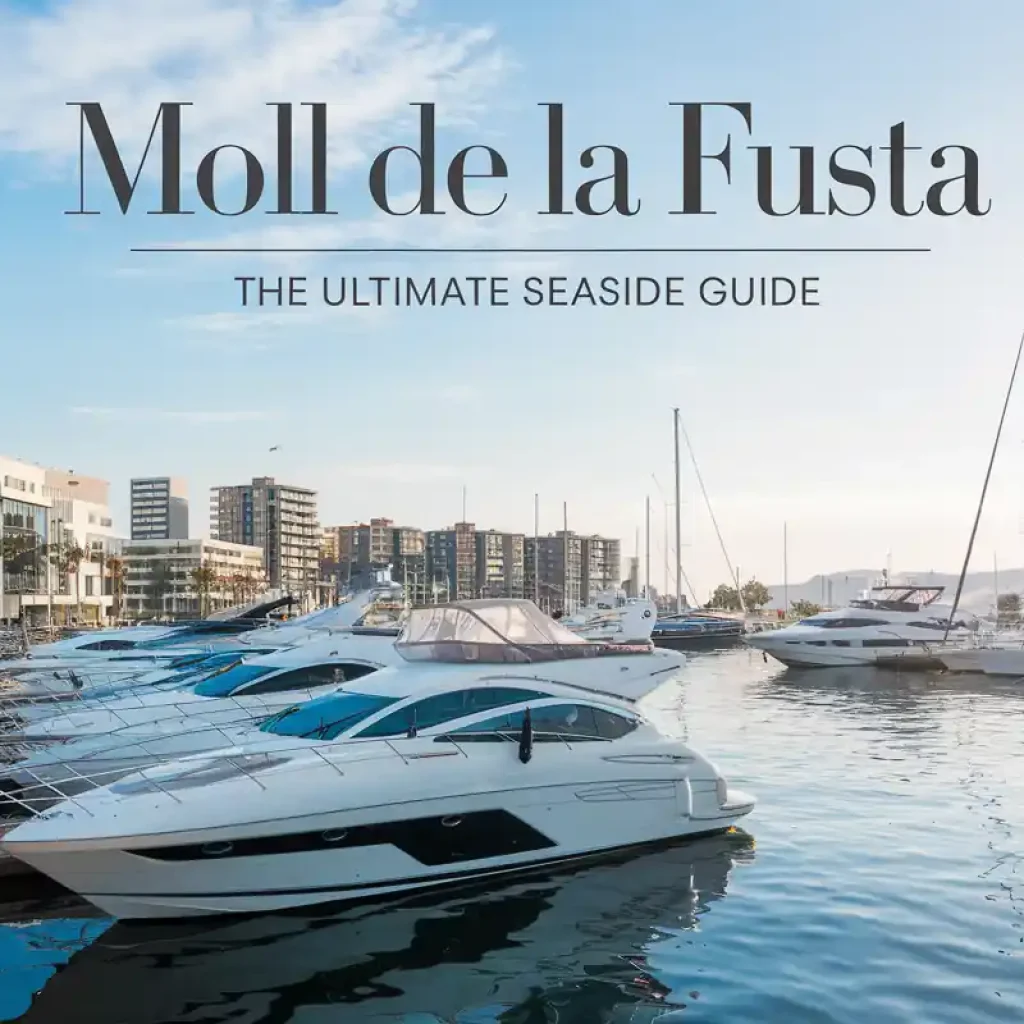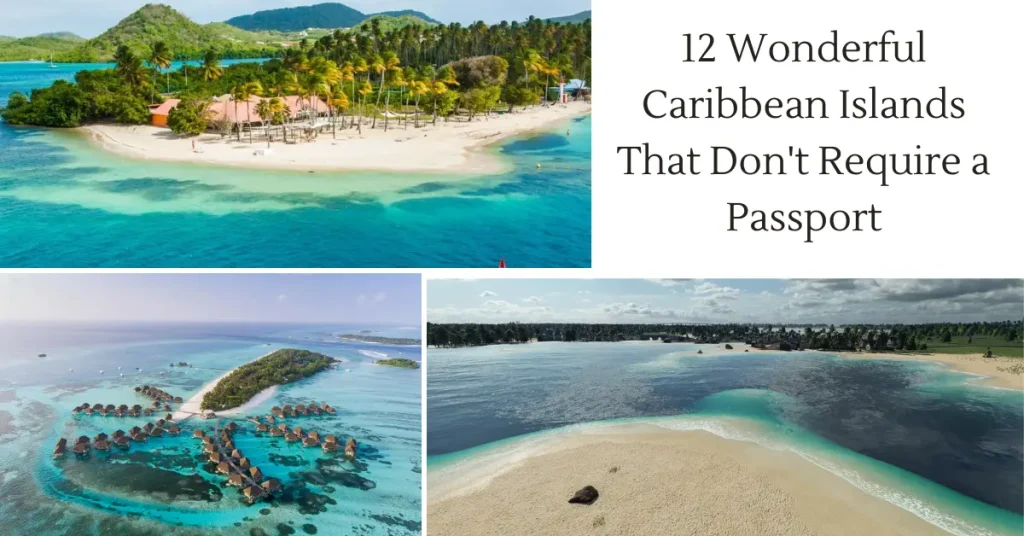The Perfect Guide to Faro: Free Hidden Gems in Portugal (2025)
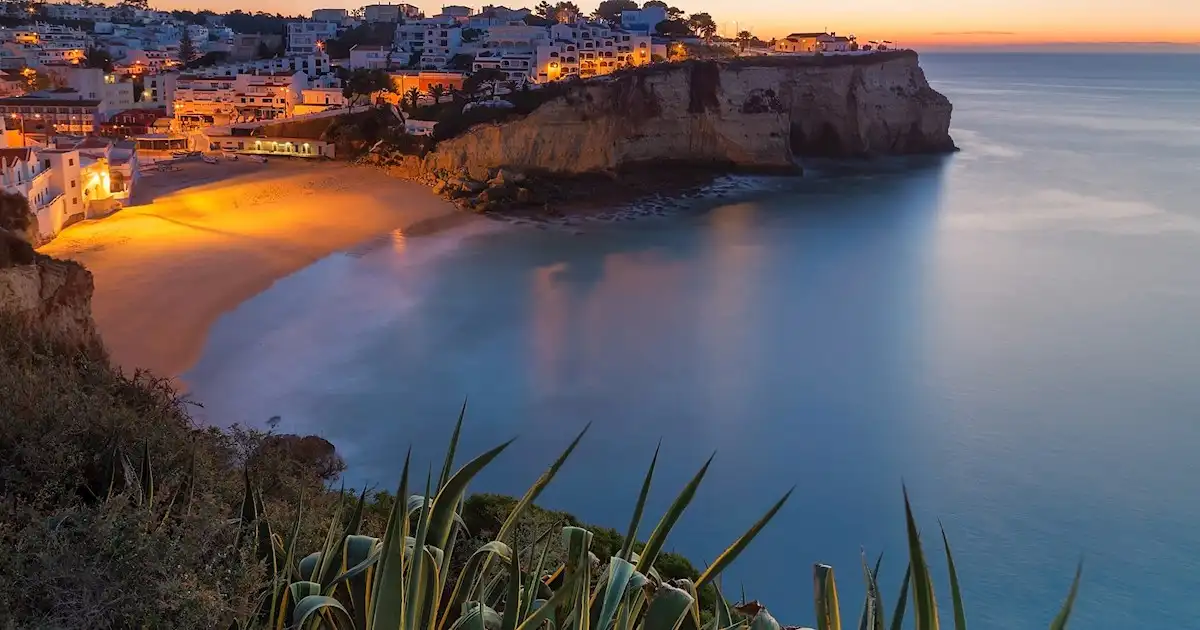
I first stumbled upon the perfect guide to faro exploring portugal’s hidden gem free idea while tracing the southern coast of Portugal one slow autumn.
Faro didn’t shout for attention like Lisbon or Porto. Instead, it whispered through cobbled lanes, salt air, and the quiet rhythm of its Old Town. Behind its simple face lies an entire world of free wonders—chapels, lagoons, and markets that cost nothing but curiosity.
This guide brings you Faro’s hidden layers the way locals see it—through street corners, seaside trails, and calm islands floating along Ria Formosa.
You’ll find small details that most tourists miss: the light through an old arch, the silence of a lagoon path, or a courtyard fountain humming with life. Each stop here has been walked, watched, and timed to help you explore smoothly in 2025.
So take this as the perfect guide to faro exploring portugal’s hidden gem free—a traveler’s blueprint to uncover real Faro without spending much more than time and heart.
Why Faro Makes a Perfect “Free Hidden Gems” Destination
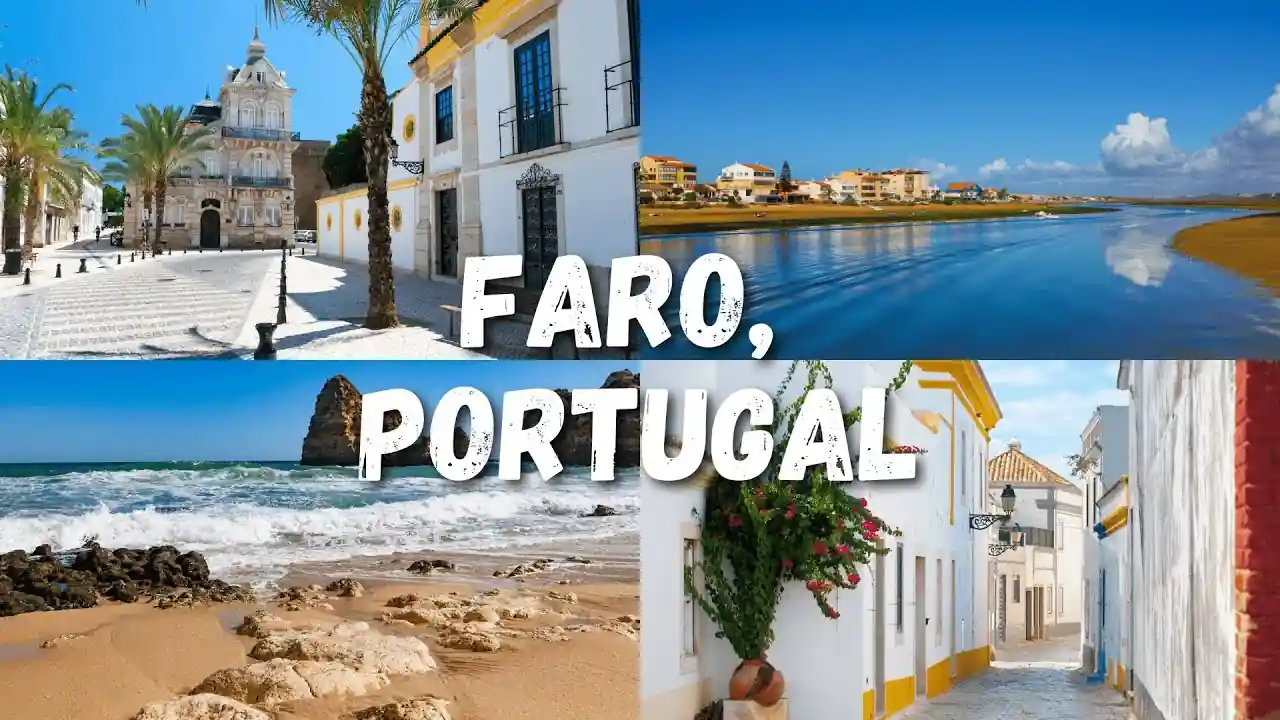
Faro rewards slow travelers. It’s compact enough to cross on foot yet layered in centuries of culture. The Cidade Velha district holds its roots—a maze of limestone streets, whitewashed houses, and fading azulejo tiles. You don’t need tickets to feel its charm. Every turn offers a quiet story, from Arco da Vila to the old city walls once guarded by a Moorish castle.
Then there’s the wild beauty of natural park in Portugal’s Algarve, a lagoon system stretching across the Portugal’s Algarve region. Locals call it the city’s lungs. Birdsong fills its air, and sunlight ripples on the shallow waters leading toward Ilha Deserta and Ilha do Farol. These islands are reachable by public ferries, yet their beaches feel untouched.
Faro’s scale keeps visitor numbers manageable. While most travelers rush north or west, the city remains peaceful, open, and wonderfully affordable.
Here, municipal support ensures parks, museums, and heritage sites stay free or donation-based. You get art, history, and coastal quiet in one small, walkable circle—a true gift for travelers who value depth over cost.
How to Do Smart Planning Bu Using This Guide?
Before exploring, plan your route like a local. Faro works best in clusters—each area reveals several hidden gems within walking distance. Use Google Maps offline to pin Old Town, Faro Marina, and nearby islands. You’ll save time and avoid backtracking.
Timing matters. Early mornings offer empty squares and soft light, while evenings at Faro Marina glow gold. Midday brings heat, so pack water and comfortable hiking shoes. Avoid summer weekends when visitor numbers spike.
Getting around is easy. Public transport connects Faro Airport, city bus stops, and ferry points to Ilha de Faro and Ilha da Culatra. If tides affect your ferry, check updates through Trip Advisor or local signage. The city layout is flat and forgiving, ideal for walking loops between chapels, markets, and viewpoints.
Carry a small first aid kit—sun, salt, and stone steps can take a toll. Keep your credit card points or cash ready for quick snacks at cafés. Download tide tables if you plan to wander into the Ria Formosa Natural Park or along island edges. These small steps turn confusion into calm discovery.
Free Hidden Gems in Faro — The Core List
1. Igreja do Carmo & Bone Chapel (Capela dos Ossos)
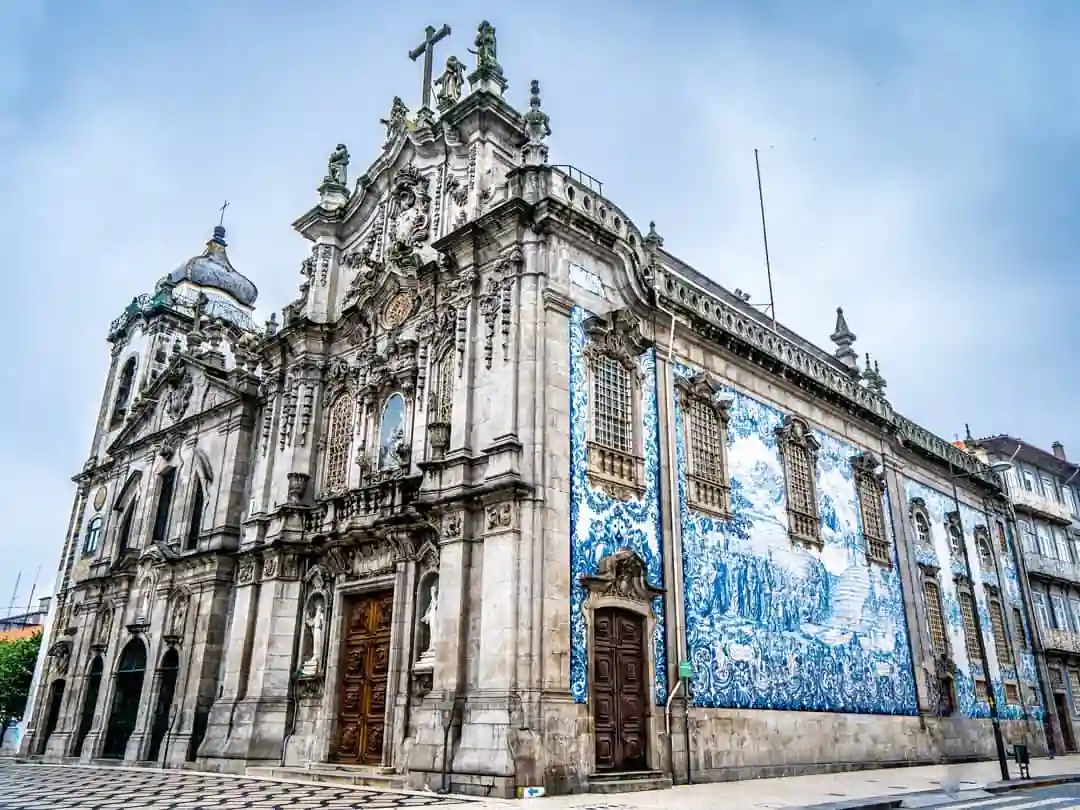
Few places in southern Portugal match the haunting beauty of the Carmo Church and its adjoining bone chapel. The exterior looks calm—white and gold with twin bell towers—but step inside and you’ll feel centuries of devotion wrapped in quiet air.
Built in 1719, the chapel walls are lined with over 1,000 human skulls. It’s not a horror display; it’s a reflection on time, faith, and the fleeting nature of life.
Entry is often free, with a donation box near the Chapel of Bones. Go early to skip tour groups, especially during cruise arrivals. The light through the side windows gives soft contrast for photos. Respect the silence, and avoid flash photography. Afterward, stop by A Casa D’Amelie for coffee—it’s nearby and blends calm atmosphere with Portuguese design charm.
Quick Tips:
- Open: 10:00 a.m.–5:00 p.m. (Check seasonal updates)
- Suggested donation: €2
- Best time: Early morning for empty aisles
- Nearby: Faro Cathedral and Municipal Museum of Faro
2. Old Town Gates & Arch Entrances
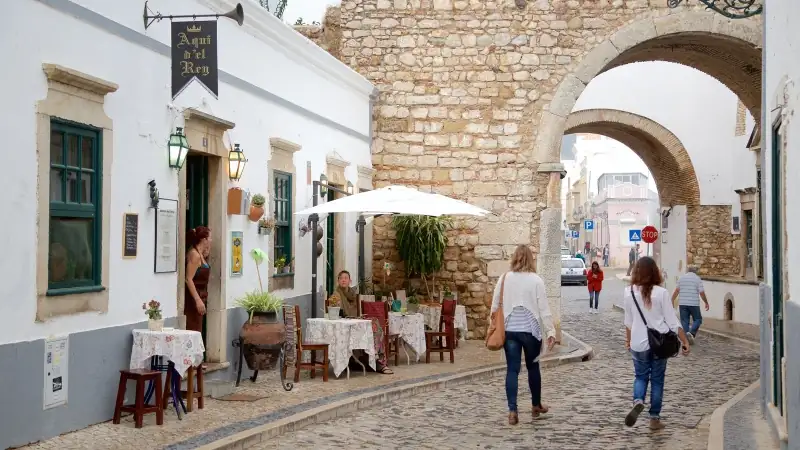
You could walk through Faro Old Town a dozen times and still notice new details. The Arco da Vila acts as the symbolic gateway into Cidade Velha, once part of a Moorish castle.
Pigeons perch on ancient stone, while tiled plaques honor explorers and kings. What makes it special is how these arches frame light differently each hour.
Start your route near Sé Catedral de Faro and follow the curve toward the Roman bridge remains near Doca de Faro. This loop showcases Maritime heritage murals that most visitors skip. Use Google Maps walking mode for easy navigation—it highlights hidden alleys perfectly.
Inside Old Town, quiet squares hide small benches shaded by lemon trees. When heat rises, step inside Santa Maria Church for calm and free entry. The bell tower offers a short climb and a wide view over the Atlantic Ocean.
Walk Sequence (Approx. 1 hour)
| Stop | Highlight | Notes |
|---|---|---|
| Arco da Vila | Main entrance to Cidade Velha | Best light before noon |
| Sé Catedral de Faro | Rooftop views | Free courtyard access |
| Doca de Faro | Harbor murals | Afternoon golden reflection |
3. Casa das Figuras & Teatro das Figuras Exterior
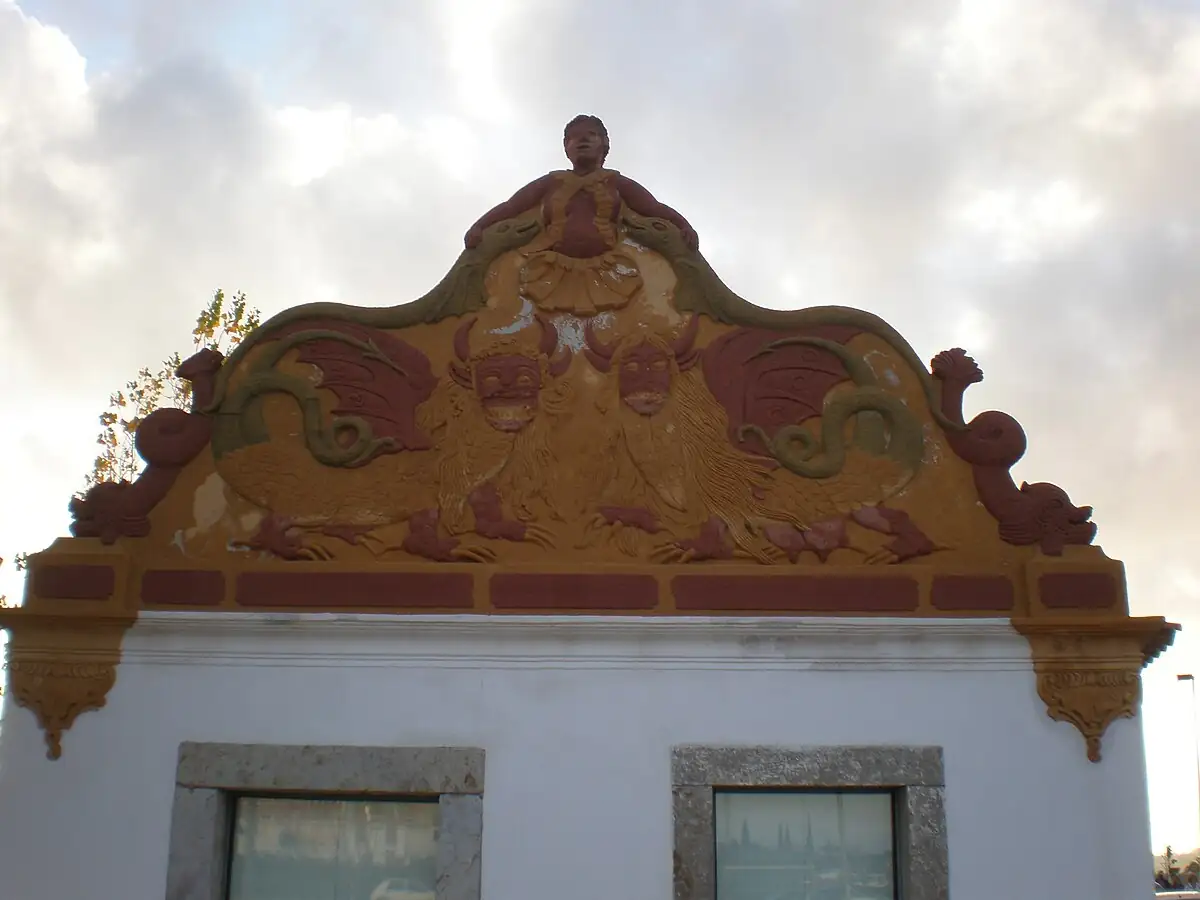
Not far from Faro Marina, this stop combines history and creativity. Casa das Figuras is a rare example of Renaissance-inspired architecture in Faro, known for its decorative stonework. Even if the interior is closed, the outer façade tells its story. You’ll find sculpted faces, flowers, and seashells—reminders of the region’s bond with the Atlantic Ocean.
A short walk away, the Teatro Lethes hosts open-air performances during summer, and its exterior courtyard often remains freely accessible. Both spots are ideal for photographers chasing subtle light textures. If you visit near sunset, stay until the stage lights glow against fading daylight—it’s one of the city’s most cinematic sights.
For budget travelers, grab an espresso at Café Mané nearby, a local favorite run by the same family for three generations. You’ll likely meet locals discussing art, football, and weather in the same breath. That’s the charm of Faro—it stays real.
4. Maritime Museum (Museu Marítimo Almirante Ramalho Ortigão)
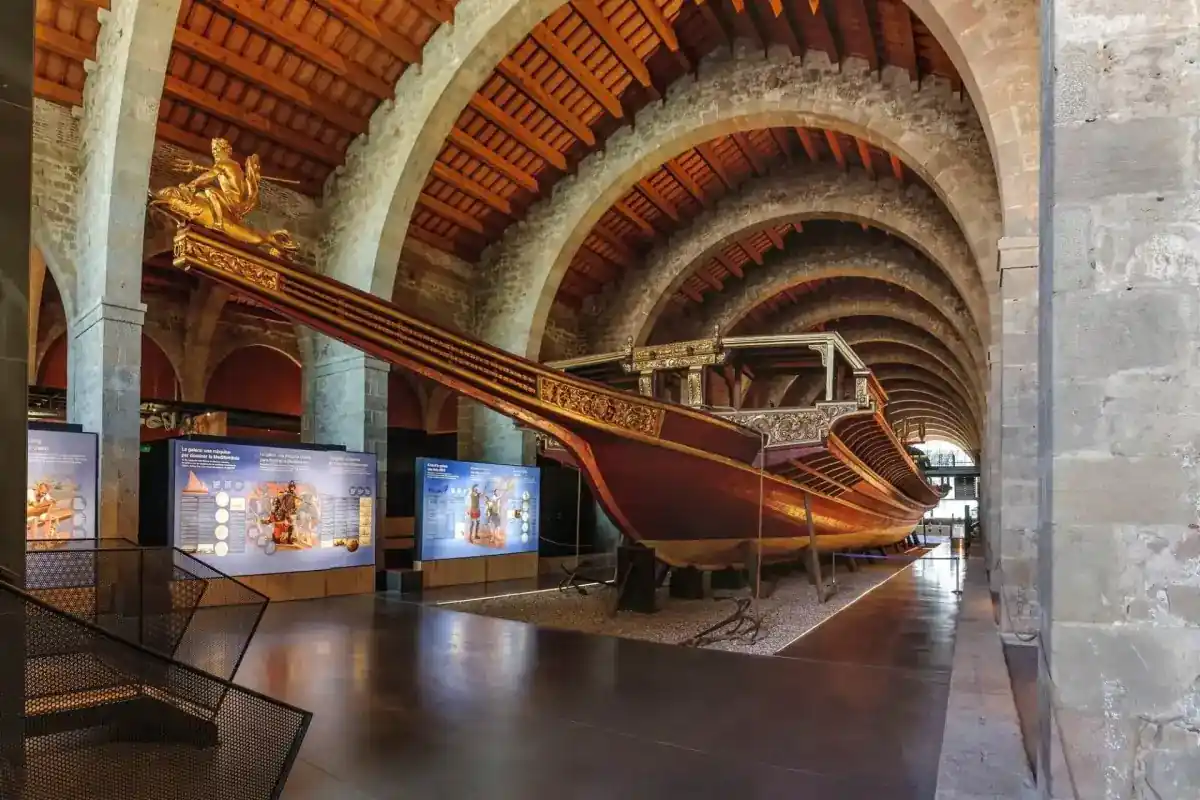
Set near Faro Marina, the small Maritime Museum offers free access to parts of its exhibit on weekdays. It’s a quiet spot that celebrates the city’s long connection with the Atlantic Ocean. Inside, you’ll find model ships, navigation charts, and photos showing Faro’s fishing past.
One wall pays tribute to sailors who once crossed between Cabo de São Vicente and Spain’s Guadiana River, protecting Algarve’s coast.
While modest, the museum’s storytelling stands out. It reminds you that this region’s rhythm is tied to tides, boats, and salt.
Visit in the morning when school groups haven’t arrived. For photographers, the harbor reflections outside the entrance make good composition studies.
Traveler Tips:
- Admission: Free (some temporary exhibitions charge €1–2)
- Good time: 9:30 a.m.–11:00 a.m.
- Nearby stops: Forum Algarve for quick shopping or snacks
- Bonus: Combine this visit with the Municipal Museum loop to understand Faro’s full heritage arc
5. Ria Formosa Walkways and Lagoon Paths
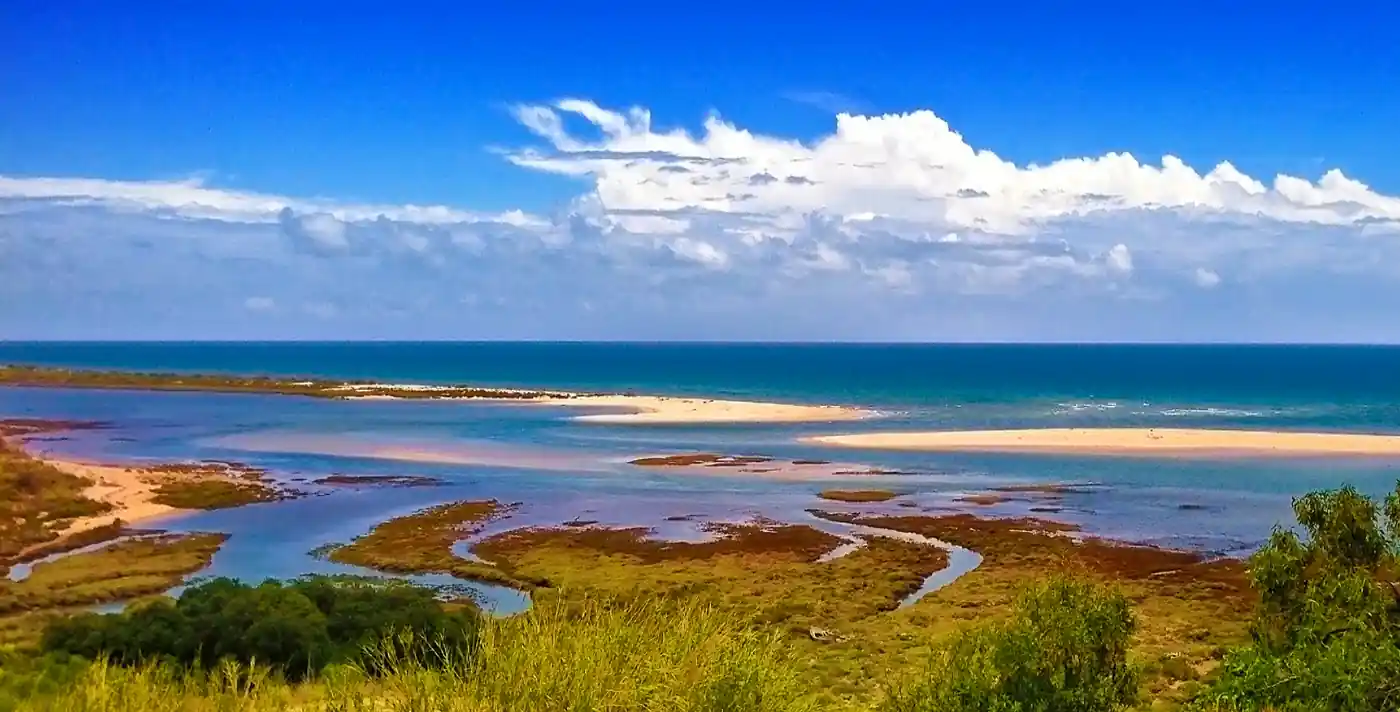
Every traveler to Faro should experience the Ria Formosa Natural Park at least once. It’s the real heartbeat of Portugal’s Algarve region, stretching from Faro to Tavira.
Wooden boardwalks guide you through marshes, where flamingos glide over water that mirrors the sky. The entrance near Ilha de Faro is free and easy to reach by public transport or rented bike.
For casual walkers, the Fonte Benémola and Costa Vicentina Natural Park trails nearby provide similar peace.
The scent of pine and salt lingers in the air as herons feed in shallow pools. Don’t rush—this is Faro’s slowest beauty, where each step feels meditative.
Recommended Loop (2 hours):
| Segment | Distance | Notes |
|---|---|---|
| Ilha de Faro entry to lagoon bend | 2.5 km | Best sunrise views |
| Boardwalk section near hide 3 | 1.2 km | Birdwatching area |
| Return via coastal path | 2.7 km | Good afternoon shade |
Bring water, hat, and light hiking shoes. And if you plan to explore during low tide, check local Google Maps layers for tide levels before heading out.
6. Ilha Deserta (The Deserted Island)
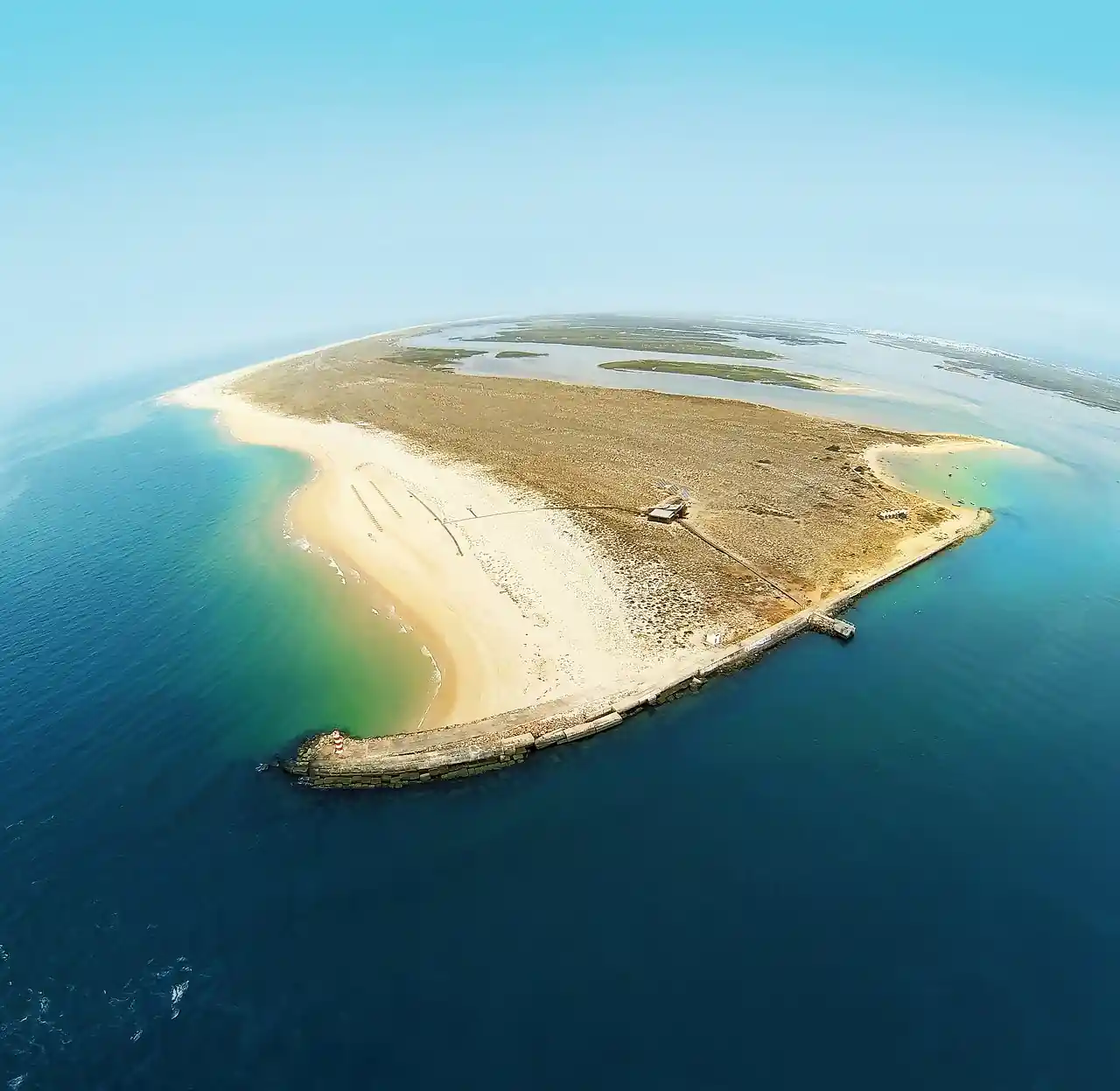
No visit is complete without stepping onto Ilha Deserta, one of the untouched wonders within Ria Formosa. A short ferry from Faro Marina gets you there in about 35 minutes. Once ashore, you’ll find a 7-kilometer stretch of quiet beach facing the open Atlantic Ocean. It’s free to explore from end to end—no shops, no noise, just wind and waves.
If you enjoy solitude, this is your paradise. Walk toward the southern tip where wooden posts mark the Cape St. Vincent direction, symbolically pointing to Europe’s edge. Keep sunscreen and a first aid kit handy; shade is minimal.
You can pack food or visit the small café near the pier during high season. Return ferries run until late afternoon, but always check times in advance—especially if sea conditions shift. I once stayed too long photographing sand ripples and nearly missed the last ride back. Lesson learned.
Quick Reminders:
- Ferry cost: Around €10 round trip (walking access free)
- Bring: Hat, water, camera
- Best time: Weekdays, early departure
- Combine with: Ilha da Barreta or Ilha da Culatra for a two-island day trip
7. Cemitério Inglês (English Cemetery) & Waterfront Graves
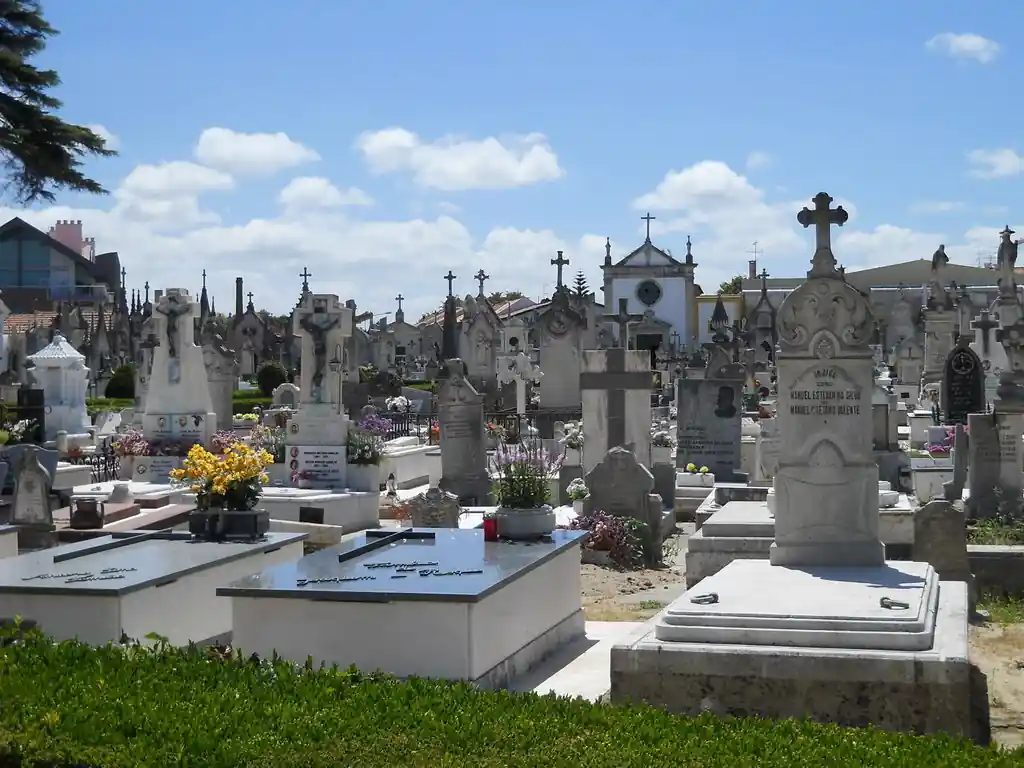
A short walk from Faro Old Town, near the outer edge of Cidade Velha, lies one of Faro’s quietest treasures—the Jewish Cemetery of Faro and its neighboring English section. Entry is free, and most travelers miss it while chasing beaches.
You’ll find marble headstones shaded by olive trees and faint carvings worn smooth by centuries of wind. Many graves overlook the Atlantic Ocean, where sailors once departed toward distant colonies.
This spot feels suspended in time. A caretaker sometimes sits near the gate, eager to share stories about Faro’s early expat residents. Bring a small flower or just stand in silence—it’s a place that deserves respect.
Highlights:
- Free entry (donation optional)
- Location: Largo do Carmo, behind Carmo Church
- Time needed: 20–30 minutes
- Nearby: Santa Maria Church and Faro Cathedral
8. Street Art & Hidden Murals

Faro has embraced creativity in unexpected corners. Around Faro Marina, look for vivid murals along Rua de São Pedro and Largo da Madalena. Local tour groups like The Broke Backpacker sometimes highlight these art routes, but you can enjoy them solo and free. Many murals depict sea life inspired by the Ria Formosa, while others reflect Portugal’s maritime roots.
I’ve walked these blocks many times, and new art always appears—layers painted over older pieces. For a self-guided route, use Google Maps street view to mark Rua Dom Francisco Gomes and Praça Ferreira de Almeida. Even the electricity boxes carry playful doodles.
Recommended Stops:
| Location | Theme | Note |
|---|---|---|
| Rua de São Pedro | Flamingos & local fishermen | Morning shade for photos |
| Largo da Madalena | Mermaid mosaic | Faces Faro Marina |
| Rua Conselheiro Bívar | Octopus mural | Night lighting perfect for contrast |
When done, stop at Café Mané again for an espresso. The café’s back wall even has a small piece by local artist João Lima.
9. Hidden Courtyards and Quiet Squares
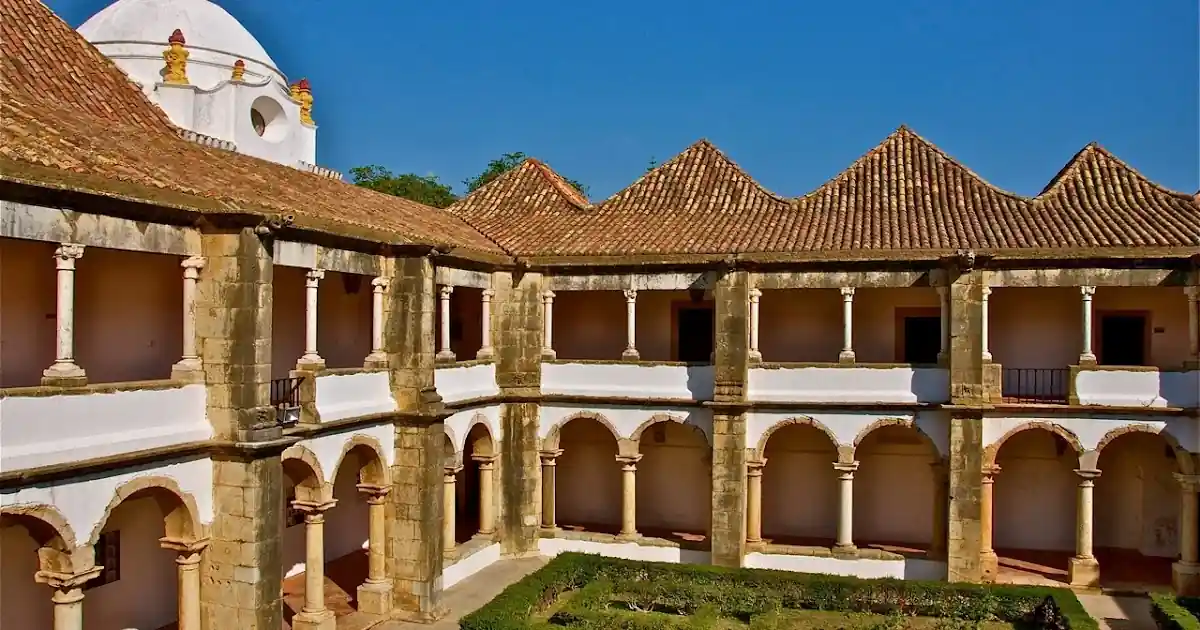
Inside Faro Old Town, tranquility hides in plain sight. Between Sé de Faro and Municipal Museum, narrow lanes open to small courtyards filled with lemon trees and azulejo benches.
Locals call them “breathing spots.” I found one behind the Faro Municipal Museum, where a fountain trickles under ivy-covered walls. It’s open to all, and no ticket or guide needed.
Bring a sandwich or pastel de nata, sit quietly, and watch the rhythm of life. During siesta hours, even footsteps fade away. Some of these courtyards connect to private homes, so respect boundaries—if a gate’s closed, skip it.
For navigation, mark these three public-access squares on Google Maps: Largo da Sé, Rua do Trem, and Largo Dom Afonso III. The last one offers partial views toward the Ria Formosa and city rooftops.
Mini-List of Free Courtyard Stops:
- Largo da Sé – next to Sé Catedral de Faro
- Rua do Trem – shaded benches, quiet reading corner
- Largo Dom Afonso III – sunset glow and faint lagoon view
Beaches Reachable by Public Ferry or Causeway
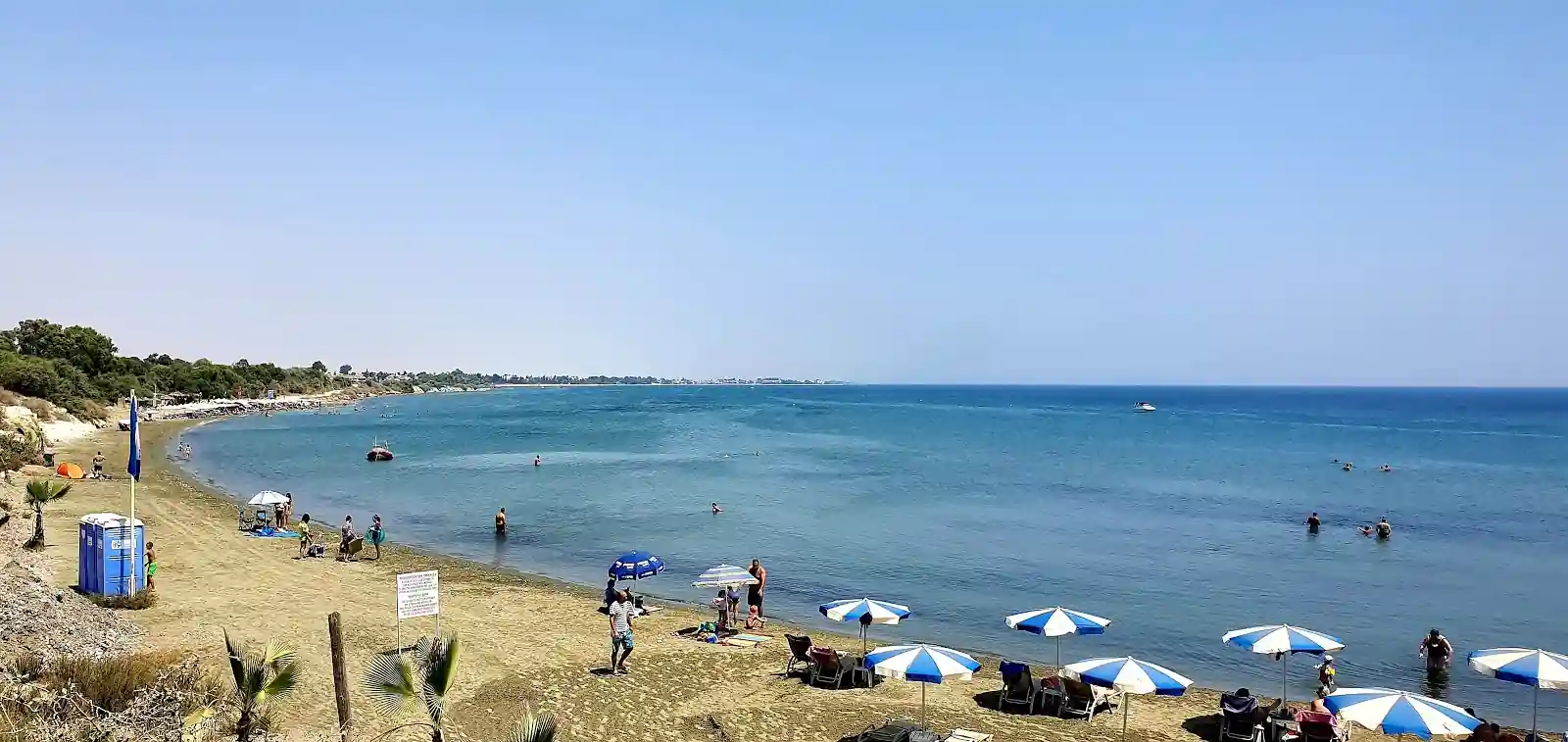
Many visitors overlook Faro’s beaches, assuming you must pay for resort access. That’s far from true. The coastline is wide open, and several beaches are reachable for free or with a small ferry ticket.
Start with Praia de Faro, linked by a long causeway that you can walk or cycle. Early morning is peaceful, with fishermen casting nets and birds circling above the Ria Formosa.
If you want quiet isolation, take the ferry from Faro Marina toward Ilha da Culatra. The trip costs under €3 and brings you to soft dunes where locals still mend nets by hand.
For those chasing vibrant color, continue toward Benagil Beach or Praia do Carvalho later in your Algarve trip. Both spots reveal turquoise water and carved cliffs that define the Portugal’s Algarve region.
Free or Near-Free Beach Options:
| Beach | Access | Notes |
|---|---|---|
| Praia de Faro | Walkway/causeway | Close to city, golden sand |
| Ilha da Culatra | Public ferry | Local fishing life, no crowds |
| Praia do Carvalho | Scenic path | Ideal for swimmers |
| Benagil Beach | Short drive | Famous cave views |
Keep sunscreen handy and respect safety conditions flags on arrival.
Local Markets with Free Window Shopping
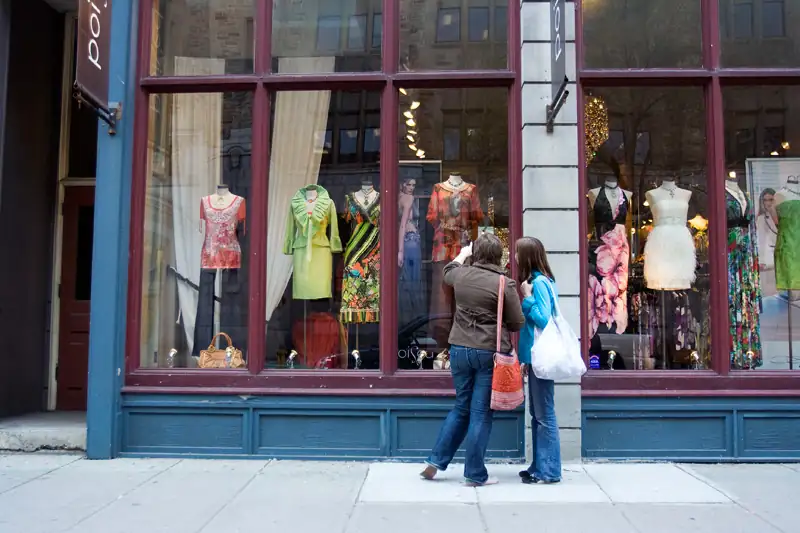
If you want to feel Faro’s daily rhythm, walk into its local markets. The Loulé Market (about 15 minutes from Faro) is a must for culture and color. Entry is free, and even without buying, you’ll enjoy the chatter, aroma, and artistry. Fish stalls glisten, old men debate prices, and artisans display cork wallets, baskets, and lace.
Closer to the center, the Forum Algarve hosts occasional craft fairs where regional goods mix with modern art. I’ve met several Cork Factory owners there who proudly explained how cork transforms from bark to bottle-stopper. Their pride is infectious and gives a glimpse of the Maritime heritage that runs deep across this region.
Best Market Tips:
- Visit before 11 a.m. for local buzz
- Ask permission before photographing vendors
- Carry small change for snacks or samples
- Try pastel de nata from nearby Café Mané stalls
Markets here are social spaces, not tourist traps—observe, taste, and enjoy.
Hidden Viewpoints and Elevated Terraces
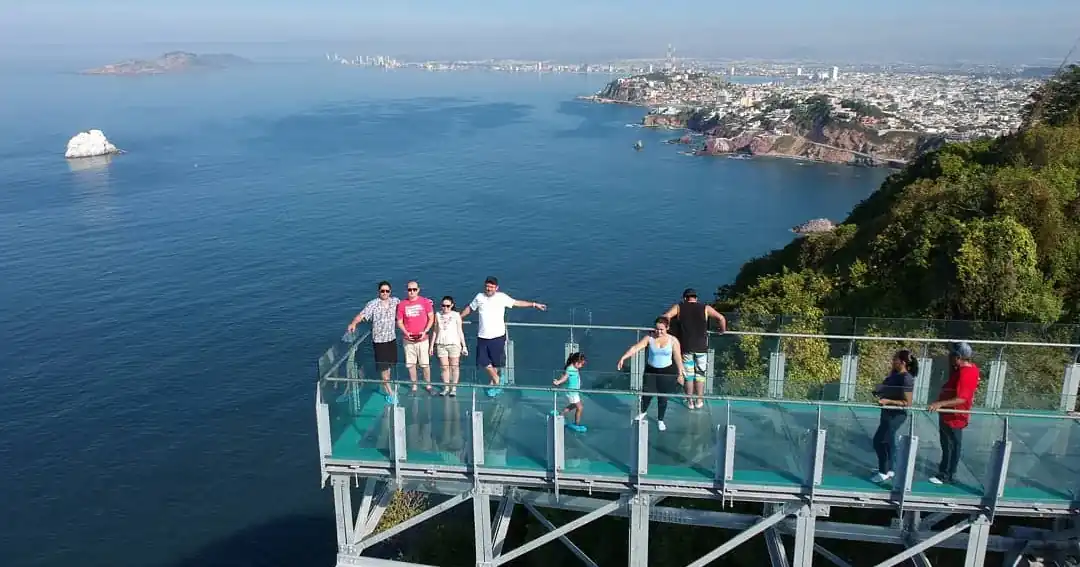
Faro’s skyline surprises you. Unlike Lisbon, where viewpoints crowd with visitors, Faro’s miradouros stay quiet. My favorite lies atop the Sé Catedral de Faro.
For a small donation, you can climb its tower for a 360° panorama—the Ria Formosa glows silver in late afternoon, and the Ilha de Faro curve appears like a watercolor wash.
Other terraces worth visiting include the top floor of 3HB Faro, a hotel that allows non-guests to enjoy drinks with a view.
From there, you’ll see the sun setting behind white rooftops and church domes. Another peaceful spot is the Garden Restaurant, which opens its terrace for diners even during off-peak hours.
Top Free or Donation-Based Viewpoints:
| Location | Type | Tip |
|---|---|---|
| Sé Catedral de Faro | Church tower | Best at 5 p.m. light |
| 3HB Faro | Rooftop bar | Arrive before sunset |
| Garden Restaurant | Terrace dining | Pair with evening meal |
Take your time—each spot gives Faro a new face and reveals why this guide truly is the perfect guide to faro exploring portugal’s hidden gem free.
Small Hidden Chapels and Nooks
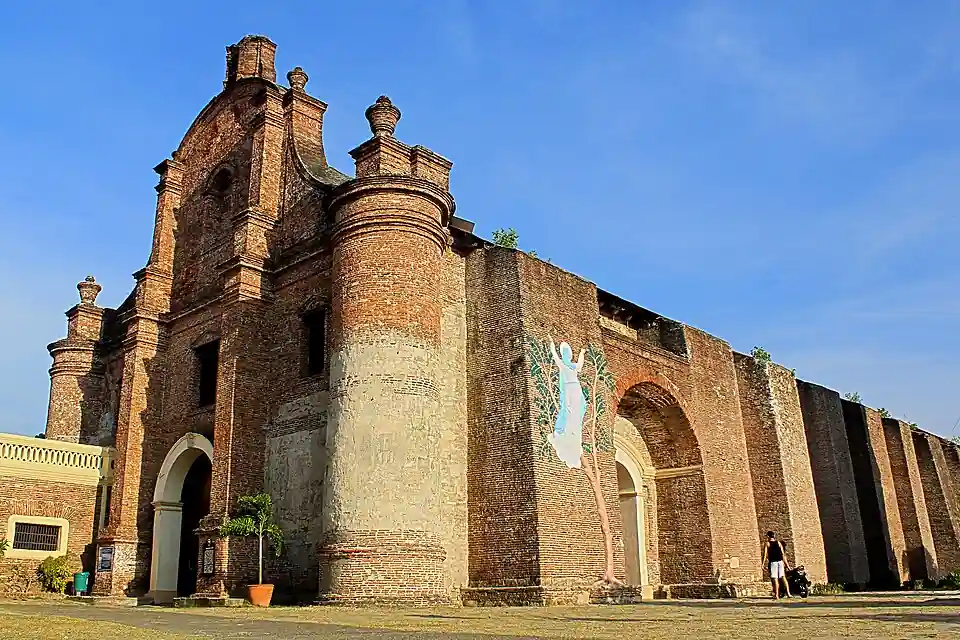
Wander through Old Town after midday and you’ll discover chapels hidden behind wooden doors and narrow arches.
One of the most touching is the Santa Maria Church, known for its intimate prayer room and faded blue tiles. Another, tucked near Largo do Carmo, holds a small altar dedicated to local fishermen who once sailed the Atlantic Ocean.
A lesser-known gem is the Chapel of Bones annexed to Carmo Church. Despite its morbid name, it carries peace rather than fear.
I met a caretaker here who told me that each skull symbolizes humility and the shared fate of humanity. It’s not grand, but it’s deeply moving.
Free Chapels Worth Finding:
| Chapel | Area | Feature |
|---|---|---|
| Santa Maria Church | Cidade Velha | Blue azulejos and quiet courtyard |
| Chapel of Bones | Near Carmo Church | Symbolic skull walls |
| Saint Peter Chapel | Rua do Trem | Evening light reflections |
Carry a scarf or light clothing to cover shoulders; most chapels still honor modest dress codes.
Community Gardens and Urban Green Pockets
Between ancient lanes and modern cafés, Faro hides small gardens that give you breathing space. One of my favorites is near the Centro Ciência Viva do Algarve, a family-friendly spot where locals rest under palm trees. Kids play, elders read newspapers, and travelers recharge between sightseeing rounds.
Farther east lies a shady retreat close to the Caldas de Monchique road, where old fountains bubble quietly. It’s part of Faro’s slower rhythm, where even birds seem to move gently. Bring a sandwich or pastel de nata and enjoy a slow hour surrounded by calm.
If you crave more greenery, rent a bike and ride out toward Costa Vicentina, passing Fonte Benémola along the way.
These areas are part of the larger Parque Natural da Costa Vicentina, which protects one of Europe’s most untouched coastal zones. Entry is free, and you can walk trails overlooking dunes and cliffs.
Quick Notes:
- Most gardens open sunrise to sunset
- Benches available for resting
- Great alternative for hot afternoons
Suggested “Zero-Cost Days” in Faro
You don’t need a big budget to explore deeply. Based on several extended stays, here are three tested loops anyone can follow for free. Save these to Google Maps for easy navigation.
One-Day Free Loop (5–6 hours)
| Stop | Highlight | Tip |
|---|---|---|
| Old Town | Arco da Vila, chapels, murals | Start early for quiet photos |
| Faro Marina | Maritime Museum, boats | Midday break, shade nearby |
| Ria Formosa Lagoon Path | Birdwatching, wooden trails | Go at sunset for colors |
Two-Day Explorer Route (Nature + Heritage)
Day 1 – Explore Cidade Velha, Faro Cathedral, Municipal Museum, and Teatro Lethes.
Day 2 – Ferry to Ilha Deserta and Ilha do Farol, ending with a sunset at Praia do Amado.
Golden Light Route (Photo Lovers)
Evening 1 – Shoot reflections near Faro Marina and rooftops from 3HB Faro.
Morning 2 – Catch dawn glow at Ria Formosa Natural Park before crowds arrive.
Following these routes shows why travelers keep returning—and why this remains the perfect guide to faro exploring portugal’s hidden gem free.
Timing, Tide & Seasonal Constraints
Timing makes or breaks a trip to Faro. After many visits, I’ve learned that the city’s best light arrives between April and June, then again in September when the air cools and the crowds thin. These months bring the right balance—warm seas, mild breezes, and manageable visitor numbers.
In summer, heat peaks above 30°C, and the Ria Formosa trails feel longer than they are. Early mornings are cooler, while evenings reward you with glowing skies over the Atlantic Ocean. During winter, short days and high tides can limit access to island paths. Always check the tide forecast before taking ferries to Ilha da Culatra or Ilha Deserta.
Rainy days happen mostly from November to February. I usually spend those hours at the Municipal Museum, Forum Algarve, or the Cork Factory exhibits. These indoor stops are free or low-cost and offer welcome breaks from drizzle.
Best Months for Free Exploration:
| Season | Conditions | Highlights |
|---|---|---|
| Spring (Apr–Jun) | Mild, bright skies | Lagoon trails and street art |
| Summer (Jul–Aug) | Hot, busy | Early mornings best |
| Autumn (Sep–Oct) | Golden light, calm | Ideal for island walks |
| Winter (Nov–Feb) | Rainy spells | Museums and chapels |
Transit, Access & Local Mobility Tips
Getting around Faro doesn’t require a rental car. Its compact design and strong public transport network make exploring easy. From Faro Airport, city buses connect to Faro Marina in about 20 minutes, costing less than €3. Ferries leave regularly toward Ilha de Faro, Ilha da Culatra, and Ilha da Barreta.
For eco-friendly travelers, bicycles and electric scooters are available near Doca de Faro. They’re perfect for reaching lagoon trails and beaches like Praia do Carvalho or Praia Dona Ana. Always check safety conditions—some coastal paths narrow near tide zones.
Drivers will find limited parking around Old Town, but free spots exist behind the Forum Algarve complex. For those using wheelchairs or strollers, the walkways through Ria Formosa Natural Park are among the most accessible outdoor routes in southern Portugal.
Transport Summary Table:
| Mode | Cost | Route |
|---|---|---|
| City Bus | €2–3 | Airport to Faro Center |
| Ferry | €3–10 | Marina to islands |
| Bike/Scooter | €10–15 daily | Lagoon & beach trails |
| Walking | Free | Ideal for Old Town loops |
Photo & Experience Enhancement Tips
Faro’s light changes quickly, so planning photo moments matters. The golden hour hits Faro Marina and Ria Formosa around 6:30–7:00 p.m. in summer. Early risers catch mist over the lagoon, while the Sé Catedral de Faro tower gives one of the most balanced city views.
Keep your setup light—phone cameras work great here. Use reflections in Praia da Marinha pools or cobblestones near Cidade Velha for creative frames. If you visit the Benagil Cave or Ponta da Piedade, remember light beams strike best midmorning.
Photo Checklist:
- Clean lens often (salt mist builds up fast)
- Include locals or boats to add life
- Try night shots at Garden Restaurant terrace or 3HB Faro rooftop
- Avoid harsh noon light; focus on morning glow instead
During one stay, I met a photographer at Costa Vicentina who swore the cliffs there catch the best shadows at sunset. After testing it, I agree—it’s an incredible natural stage for both professionals and casual shooters alike.
Local Culture, Stories & Hidden Lore
Every corner of Faro hides a story, often told by locals over coffee or in evening walks around Old Town. One favorite tale I heard from a guide near Carmo Church tells how sailors once offered candles at the Santa Maria Church before setting sail across the Atlantic Ocean. Their safe return was celebrated with music, and that tradition still echoes during the summer festivals.
Inside the Casa Mãe Hotel, you’ll find modern art exhibitions mixed with local crafts—proof that Faro’s creativity isn’t stuck in the past. Across the street, the Garden Restaurant sometimes hosts open mic nights, where locals share poetry or play soft Fado tunes.
I once met a sculptor there who used driftwood from the Ria Formosa as art pieces—a perfect example of how nature and heritage blend in this city.
If you’re curious about local folklore, ask about the ghost said to wander near the Roman Ruins of Milreu or the fishermen’s stories from Culatra Island. Locals tell them with a smile—half myth, half memory.
Quick Cultural Highlights:
| Place | Cultural Element | Cost |
|---|---|---|
| Casa Mãe Hotel | Art & design showcase | Free entry |
| Garden Restaurant | Fado & poetry events | Free evenings |
| Culatra Island | Fishermen tales | Free to visit |
Safety, Etiquette & Respectful Visiting
Faro’s charm lies in its calm rhythm, but respect keeps that peace alive. When visiting chapels like the Sé de Faro or the Chapel of Bones, keep voices low and dress modestly. Locals appreciate quiet reverence in sacred spaces.
Avoid littering along the Ria Formosa Natural Park or beaches like Praia dos Três Irmãos. Even a single plastic bottle disrupts the delicate ecosystem. Always follow local safety conditions—flags on beaches show current sea strength, and tide boards near Ilha Deserta and Ilha da Culatra warn of shifting sandbanks.
Faro is safe overall, even for Solo Woman Traveling. Still, use common sense in alleys at night, and save your hotel pin on Google Maps before exploring. Locals are helpful and polite, often going out of their way to give directions.
Local Etiquette Reminders:
- Greet shopkeepers with “Bom dia” before asking questions.
- Ask before photographing street artists.
- Use bins and avoid feeding seagulls.
- Keep noise low after 10 p.m., especially in Cidade Velha.
Final Thoughts
After years of exploring, I’ve learned that Faro’s beauty doesn’t need price tags. The city rewards patience, curiosity, and respect.
From the still waters of the Ria Formosa to the bell towers of Old Town, every step uncovers another quiet wonder. Even in 2025, these places remain open, peaceful, and full of life.
Use the perfect guide to faro exploring portugal’s hidden gem free as your companion—whether you’re tracing lagoon paths, wandering courtyards, or talking with locals near Faro Marina. Travel slow, take breaks, and let the city reveal itself one corner at a time.
If you want to keep exploring, combine this guide with nearby adventures along the Portugal’s Algarve region, from Costa Vicentina to Praia da Marinha. Download your free offline Google Maps route or printable version of this hidden gems loop before you go. Faro waits quietly, and the best part—you don’t have to spend much to feel its magic.
People Also Ask(FAQs)
1. Which hidden gems are truly free to visit?
Most chapels, courtyards, and beaches like Praia do Carvalho and Ilha Deserta are free, though some accept small donations.
2. Are there closures or restrictions in 2025?
Some small museums adjust hours during winter, but outdoor areas like Ria Formosa remain open year-round.
3. Do I need a ferry for every island visit?
Yes, except Ilha de Faro, which connects by a bridge. Ferries to Ilha da Culatra and Ilha da Barreta cost under €10.
4. What’s the best time to avoid crowds?
Visit midweek mornings or travel in late September when visitor numbers drop.
5. Are these areas safe at night?
Yes, Faro is calm. Still, avoid dark lanes after midnight.
6. Can I visit in winter?
Yes. Expect cooler weather and fewer ferries, but heritage sites remain open.
7. Is photography allowed inside chapels?
Yes, except during services. Always turn off flash.
8. Are these sites family-friendly?
Yes. Parks, islands, and the Centro Ciência Viva do Algarve are great for children.
9. Are there steep climbs or long walks?
Some routes in Costa Vicentina and Ponta da Piedade involve stairs, but most Faro loops are flat.
10. Can I rely on online navigation?
Definitely. Download offline Google Maps before heading into lagoon trails or narrow city lanes.
Recent Posts
 20 Surreal Places in Mexico That Feel Too Dreamy to Be Real (2025)
20 Surreal Places in Mexico That Feel Too Dreamy to Be Real (2025) What Makes Santiago Ways the Most Trusted Camino Agency?
What Makes Santiago Ways the Most Trusted Camino Agency? What Makes Orbis Ways the Go-To Choice for Outdoor Travel Enthusiasts?
What Makes Orbis Ways the Go-To Choice for Outdoor Travel Enthusiasts? Holiday Party Planning 101: Why Transportation Should Be at the Top of Your List
Holiday Party Planning 101: Why Transportation Should Be at the Top of Your List A Complete Guide to Veneajelu – Types, Routes, Prices, & More
A Complete Guide to Veneajelu – Types, Routes, Prices, & More

